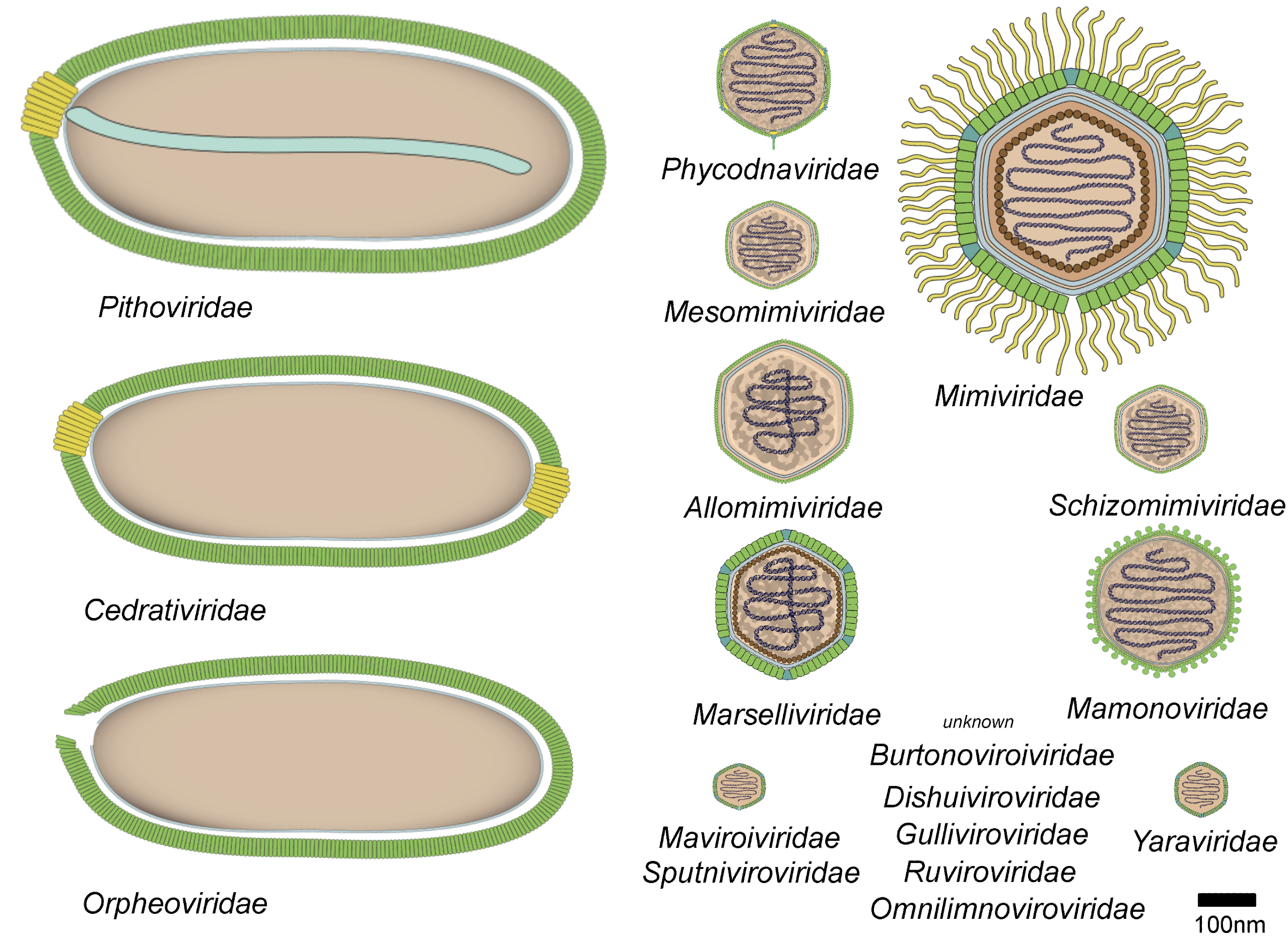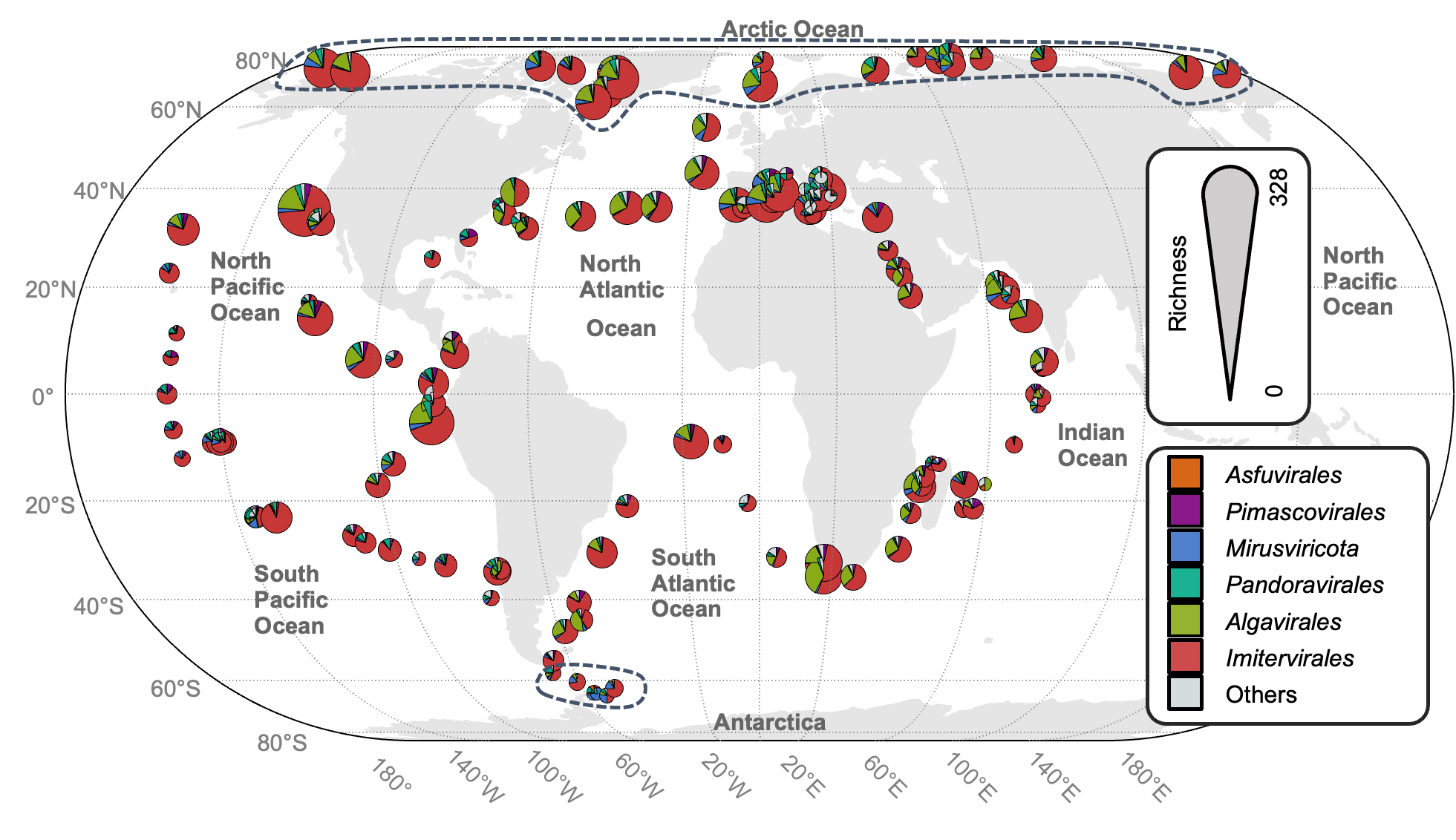Research Topics
“日月之行,若出其中; 星汉灿烂,若出其里。” "The sun by day and the moon by night appear to rise up from the sea in deep; The galaxy so bright appears to sink down into the sea in sleep"The ocean appears so vast and mysterious, as if it could encompass everything in the world. What if I told you that a single cup of seawater or a drop from a pond contains billions of viruses? Would you be surprised, or even scared, by the hidden micro-world within aquatic environments?
In fact, viruses are identified as the most abundant biological entities on Earth. Why do they exist in such abundance? By infecting cellular organisms, viruses play critical roles in regulating microbial communities, driving nutrient cycles, and even facilitating the evolution of their hosts. They shape the balance of life in oceans, lakes, and rivers, influencing ecosystems on a global scale.
The importance of viruses calls for a more comprehensive exploration of their roles. A list of fundamental questions can be framed based on the 5W1H standard:
- Who are they (Biodiversity)?
- Where are they (Biogeography)?
- When do they appear (Dynamics)?
- What do they infect (Host range)?
- How do they infect (Infection cycle)?
- Why do they become so (Evolution)?
These questions are simple yet complex. While some have been partially answered, this is not the endpoint. I aspire to push the boundaries of knowledge further through my efforts.

Protist dsDNA virus (ICTV)
Currently, the ICTV database contains 14,690 experimentally validated virus species. However, with the advent of metagenomics, we can now detect more viruses that were previously unculturable.
Despite this, detecting viruses still presents significant challenges, including but not limited to the following:
- The abundance of viruses in the environment is much lower than that of cellular organisms
- Viruses exhibit high diversity but lack a universal marker gene like cellular organisms
- Viruses have higher mutation rates compared to cellular organisms.
- Viral genomes contain many repetitive sequences and intraspecies diversity
- There are few reference genomes
Through collaboration and synergy with excellent scientists, I participated in the discovery of "Mirusviricota"(Nature 2023), a phylum-level taxon in the Realm Duplodnavira.
Apart from species diversity of viruses, functional diversity is another key issue in understanding viruses. So far, no more than 10% of viral genes have functional annotations (KEGG orthologs). Therefore, I am working on improving the classification and annotation of viral genes.
Giant viruses have been shown to be widespread, abundant, and active in the ocean. A considerable proportion of unique populations have been found specifically in the Arctic Ocean. In my Ph.D. thesis, I aimed to understand the mechanisms by which these viruses form distinct communities in polar environments (Nat. Comm. 2023).
Besides the open ocean, giant viruses have also been detected in various aquatic environments, such as inlet (Preprint 2024) and freshwater (ISME J 2024). These two time series studies suggest that the microdiversity of giant viruses affects their seasonal niches, and giant viruses exhibit specific dark water temporal patterns.
Understanding the ecology of giant viruses involves not only the ambient environment but also their hosts. Given the challenges in experimentally isolating virus-host pairs, predicting hosts of giant viruses is crucial. Because of this, I also focused on developing methodologies to evaluate and improve the accuracy of host predictions for giant viruses. (Msphere 2021).

Distribution of marine giant viruses

Protist dsDNA virus
The evolutionary history of giant viruses remains a subject of ongoing debate and uncertainty. The hybrid hypothesis for ICTV system suggests that giant viruses evolved from smaller eukaryotic dsDNA viruses.
The mosaic feature of mirusviruses suggests that herpesviruses evolved from tailed bacterial viruses via ancestral protist-infecting viruses, namely the ancestors of the modern day mirusviruses and herpesviruses (Nature 2023). Then we detected mirusviruses in a broad range of eukaryotic genome assemblys (Curr Biol 2024).
